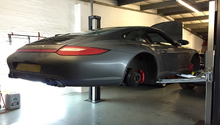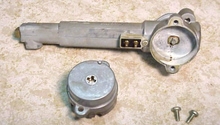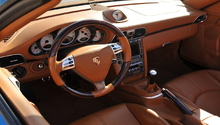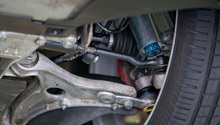Porsche 993: Recalls and Technical Service Bulletins
While the Porsche 993 is considered by many to be a near-perfect vehicle, it did see a number of recalls during its years of manufacturing. The following is a summary of those recalls, what components were faulty, the company's suggested fix in each instance, as well as a summary of service bulletins separated by the year in which the car was built.
This article applies to the Porsche 993 (1993-1998).
The Porsche 993 is the company’s name for the Porsche 911 model manufactured and sold between 1993 and 1998. Similar to its predecessor, there were several different styles of the car produced during the years it was manufactured, varying in body style, drivetrain, and the equipment that came with it.
While the 993 is considered by many to be an impeccable vehicle, it did see a number of recalls during the years it was produced. Have no fear — this is not an uncommon thing to have happen. In fact, there’s a law in place called the “National Traffic and Motor Vehicle Service Act” which allows consumers to write the National Highway Traffic Service Administration (NHTSA) with what they perceive to be issues with their vehicles. If the NHTSA deems the complaint worthwhile, they can issue a recall for which the manufacturer needs to do one of three things: repair the problem, replace the faulty equipment, or refund the purchaser’s money.

Technical Service Bulletins (TSBs)
A Bulletin, also referred to as a Technical Service Bulletin or TSB, is a general advisory issued to the customer by the manufacturer. If the manufacturer is made aware of a common or recurring default, they may issue a bulletin with detailed instructions on ways to avoid or solve the problem. Unlike recalls, these bulletins may not necessarily pertain specifically to safety issues. Bulletins discuss a wide variety of possible and common complications.
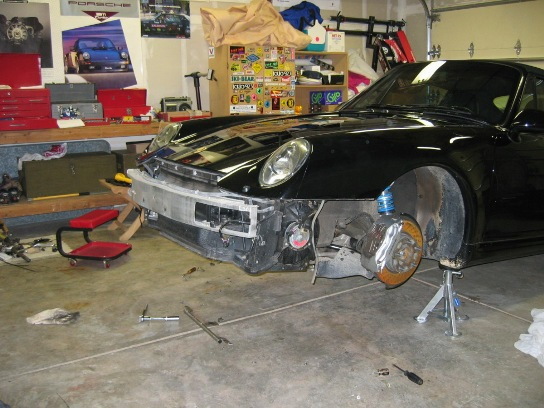
Below, some of the recalls and technical service bulletins issued for the Porsche 993 vehicles are highlighted, organized by year issued. Note: Service Bulletins are instructions from the manufacturer regarding the repair of a product.
1993
Recall #1 |
Recall #2 | |
|---|---|---|
Summary |
A part of the steering column upper universal joint cracked during the manufacturing process. | The hydraulic brake pressure reduction valve causes the rate of hydraulic pressure reduction to slow down, which may result in the rear wheels locking-up even with the anti-lock brake system in operation. |
Consequence |
This condition could result in noise and free play in the steering system and if left uncorrected, will result in loss of steering control. | Rear wheel lock-up may result in loss of vehicle control and an accident. |
Remedy |
Dealers will inspect the universal joint for cracks and will replace cracked joints with new parts. | Porsche dealers will install a modified hydraulic brake pressure reduction valve. |
Service Bulletin #1
Summary: Exchange engines and transmissions for warranty.
Service Bulletin #2
Summary: The front transmission case cover and spur gears are no longer available as separate parts.
1994
Recall | |
|---|---|
Summary |
The latch hook on the convertible top can crack, developing into a break of the latch hook, impairing its function. |
Consequence |
At highway speeds, the convertible top will not be held firmly onto the car body and could open unexpectedly, causing a risk of an accident. |
Remedy |
Replace the latch hook assembly with a new assembly. |
Service Bulletin #1
Summary: Exchange engines and transmissions for warranty.
Service Bulletin #2
Summary: The front transmission case cover and spur gears are no longer available as separate parts.
1995
Service Bulletin #1
Summary: Overview of summer tires, wheels, and spacer rings.
Service Bulletin #2
Summary: Technical information on the air bag control unit.
Service Bulletin #3
Summary: A new version washer is now installed with the securing bolt of the camshaft drive gear.
Service Bulletin #4
Summary: A new type of adhesive and applicator are to be used whenever replacement of the front or rear windshields becomes necessary.
Service Bulletin #5
Summary: The front transmission case cover and spur gears are no longer available as separate parts.
Service Bulletin #6
Summary: Insufficient cabriolet top clearance.
Service Bulletin #7
Summary: Noises from the passenger side airbag while driving.
1996
Service Bulletin #1
Summary: Porsche cars North America requests return of the following units to PCNA: part numbers 955 628 320 00 and 955 628 321 00, tip switch.
Service Bulletin #2
Summary: Porsche cars North America requests return of the following unit to PCNA, but only in cases where the defect is visible: part number 955 110 235 01, fuel line.
Service Bulletin #3
Summary: Handling PTFE crankshaft seals.
Service Bulletin #4
Summary: Converting 1996 model litronic lights.
Service Bulletin #5
Summary: W301-Replacement of engine wiring harness. 911 Turbo.
Service Bulletin #6
Summary: Secondary oil filter bleed back. Part number: 993 107 203 03.
Service Bulletin #7
Summary: Exchange engines and transmissions for warranty. This bulletin replaces bulletin wty0203.
1997
Service Bulletin #1
Summary: Software update pst2 version 24.0; Not for PIXIS. Porsche Boxster 1997.
Service Bulletin #2
Summary: Overview of summer tires, wheels, and spacer rings.
Service Bulletin #3
Summary: Installation of dual tailpipe.
Service Bulletin #4
Summary: Campaign information on replacement of the air bag deactivation device in conjunction with the Porsche child seat system.
1998
Recall | |
|---|---|
Summary |
Equipment description: Child seating system air bag deactivation kit for use on 1997-1998 911 Carrera S, Carrera 4, Carrera 4S, and Turbo (1997 model only), part no. 993 803 283 00, and 1997-1998 Boxster model vehicles, part nos. 996 803 283 00 and 996 803 083 00. Due to a manufacturing problem, the contact buckle (which is part of the kit) does not deactivate the air bag(s). |
Consequence |
In the event of a crash, this results in the deployment of the air bag(s) which could result in severe injury or death to the child seat occupant. |
Remedy |
Dealers will install a modified air bag deactivation kit. |
Related Discussion and Site
- Recalls and TSB - Rennlist.com
- Recalls - Porschedata.com

